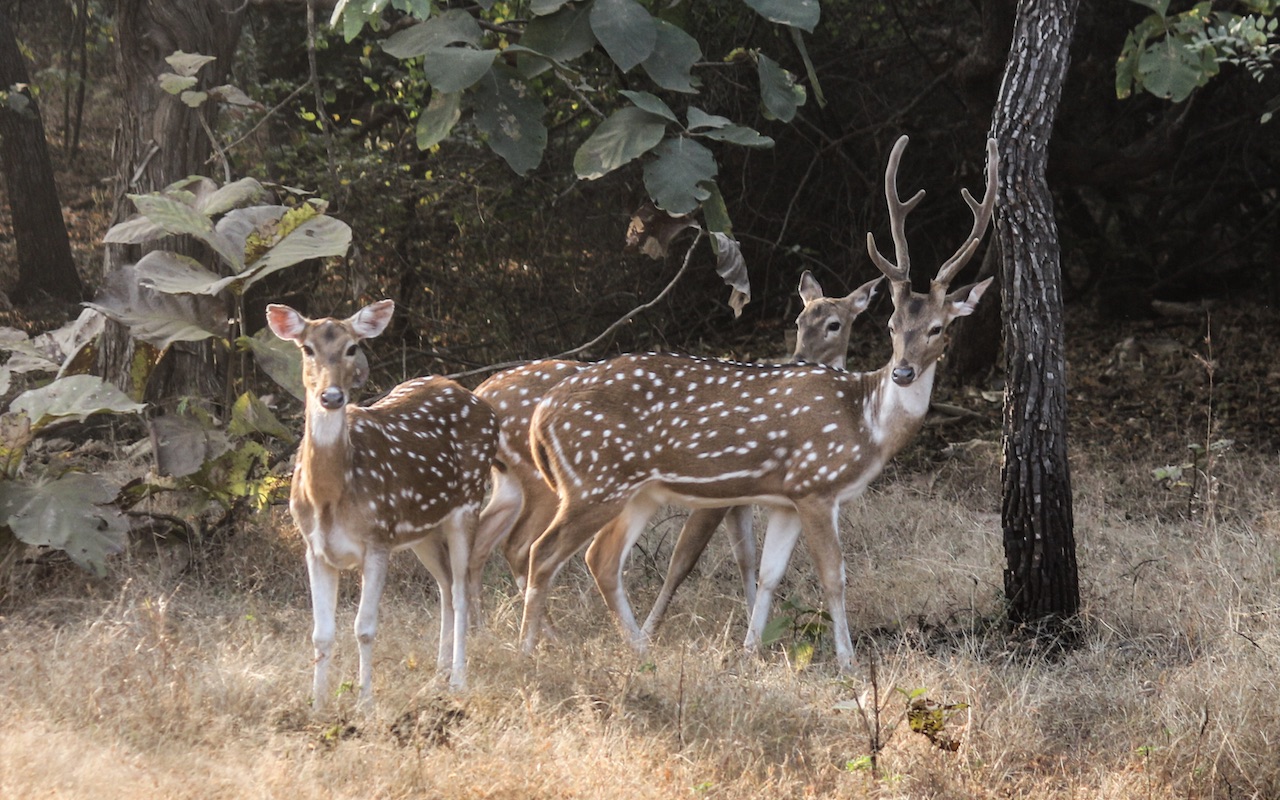
Chital at Gir National Park, Gujarat, India
Graceful Chitals eclipse even the stately looking sambar - found in dense deciduous or semi-evergreen forests and open grasslands of Gir National Park, Gujarat, India. The name Chital is derived from the Sanskrit word cītrala (चित्रलः), meaning spotted. Interesting to note is that the name of the Cheetah has a similar origin.
Chitals are distinctly sexually dimorphic - males are larger than females and antlers are present only on males. The upper parts are golden to rufous, completely covered in white spots. They have white fur on their abdomen, rump, throat, insides of legs, ears, and on the inner side of their tails. How to reach Gir National Park?
Grazers as well as browsers, the Chital mainly feed on sprouting grass, shrubs and fruit throughout the year. Browse forms a major portion of the diet (herbs, shrubs, foliage, fruits) only in the winter - that is between November to January - when the grasses are dried up and no longer palatable. Males at times are seen standing on their hind legs to browse on the foliage of trees.
They are active throughout the day - foraging begins before sunrise and peaks by early morning - when the temperature rises around midday, the animals rest or loiter about slowly. Foraging recommences by late afternoon and continues till midnight. They fall asleep a few hours before sunrise, typically in the forest which is cooler than the glades. Chitals forage in groups - and approach water holes twice in a day with great caution.
Chital are often in the company of Common Myna, Sambar and Grey Langurs. Chitals have a commensal relationship with the Common Myna, a common bird, who benefit from the insects disturbed by the browsing deer. The relationship with Sambar and Grey Langurs is more mutualistic, as all benefit from the extra vigilance and all react to alarm calls of the other species. Grey Langurs make good sentinels, perched on high vantage points, as they forage high in the trees and can spot predators earlier than the deer. Additionally Chital benefits from food dropped or dislodged by the foraging monkeys.
Chitals live in large and fluid groups. Chitals in India are hunted by fiercest terrestrial predators like the Bengal Tigers, Asiatic Lions, Leopards, Wolves, Indian Rock Pythons, Dholes, Mugger Crocodiles. Golden Jackals… They usually target juveniles - male Chitals are less vulnerable than females and juveniles.

